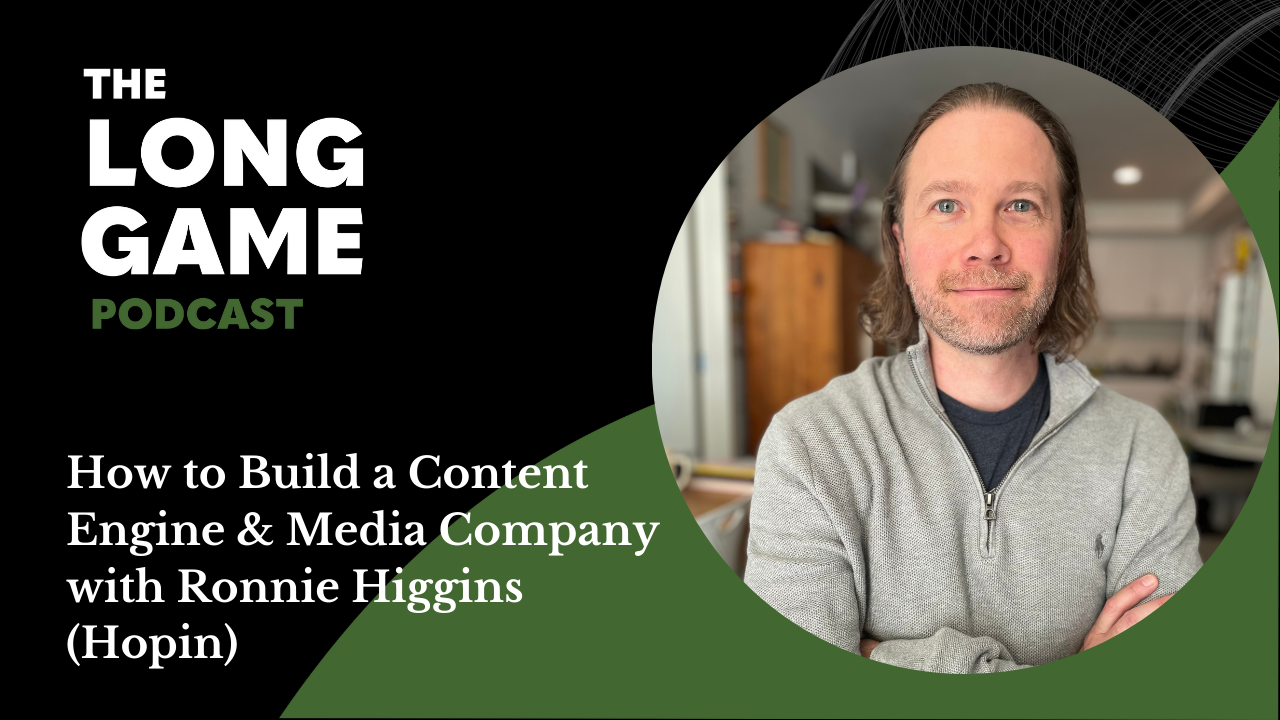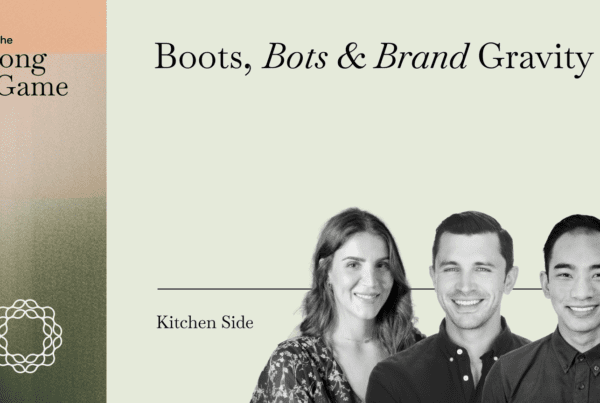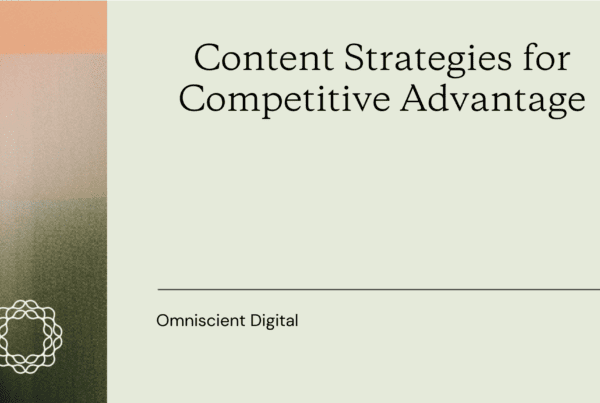
Many modern companies claim to have an in-house media company, but they don’t. Being a media company is more than expanding content beyond a blog, or even adding a podcast and courses. That’s still just content marketing.
When you build an in-house media company, you’re expanding into different content formats, but more importantly you’re looking at how they all work together. You’re looking to reach multiple demographics with a series of content and then turning that into a franchise.
In this episode, Ronnie Higgins, Director of Content for Hopin, talks to us about how building an in-house media company is like creating the equivalent of the Marvel universe.
Ronnie has a decade of content marketing experience. Previously, he worked at Eventbrite where he helped to build the content engine before scaling it globally. An advisor to startups, he is currently building a content engine and in-house media company from scratch at Hopin – one of the fastest growing SaaS companies around.
Show Topics
- Connect content together to build a media company
- Take something familiar and make it new
- Build cross-functional alignment
- Create sustainable content
- Find your way to other people’s property
- Work with subject matter experts
Show Links
Check out Hopin
Follow Ronnie Higgins Twitter
Listen to the podcast
Watch a clip
Key Takeaways
22:06 – Learn from failure early on
Imposter syndrome can help drive you and push you to learn from your failures so that when you make it to higher positions, you’re ready for the greater demands.
“As long as you’re analyzing those failures, you will always get better. And that’s something that I then started to retrospectively look at my four and a half years at Eventbrite where I went from a fish out of water to scaling the global operation and running it up until the point where I was building an in-house media company and got the cross-functional buy-in to do it. The only thing that stopped me was a pandemic, but it’s only in that retrospective that I saw that going through the shit and the crap that made me into the person that could deflect the shit in the crap that came at me when it mattered most. Which is like, once you reached a senior level, especially at a company like Hopin or any other startup that is pretty much relying on you to do a very important job, it helps you deal with the scrutiny and helps you deal with being under a microscope from the executive level to where you’ve been through that.”
35:47 – Treat content like a product
In 2020, Ronnie started to see how content was shifting and knew that content marketers needed to shift how they thought about content in order to stay relevant.
“I started to think, wow, people are going to start getting even more savvy about even just content marketing. We need to get smarter. So I started to do some research. I met with what was then the SF bureau chief of Buzzfeed, to get a sense of how Buzzfeed runs operationally, how they leverage data and data science and how they’re thinking about this future. Talk to some other people that I knew that knew the inside of Wall Street Journal and so forth and Washington Post, and had this idea of building a brand newsroom slash what is now in-house media company. And the idea there was that I saw that we could build I guess like a moat, but treat content as a product of the company and not some marketing activity and treat the owned properties like a product where you are optimizing for engagement and keeping people there. So you increase the recency and frequency of those visits through a diverse portfolio of content.”
40:06 – Connect content together to build a media company
An in-house media company is not what a lot of companies think it is. It’s not just producing more types of content.
“There are a lot of brands and CMOs out there that will say that their company is an in-house media company or their content team. And what they really mean is we do more than blog. You have some courses and a podcast. And to me, having actually worked in media, that still feels like content marketing. I’m not doing what the media world does to sort of focus on where does this piece of content fit into someone’s day? So instead of just having an hour-long podcast or multiple hours long, is there a part of someone’s life where it’s like the 15 minutes they have between commuting or something like that? Is that where I fit in? How do I learn? What are the ways I can hit multiple demographics with a franchise or a series? And then how does that then turn into a franchise? When I look at Marvel and I see comic books, movies, TV shows, I mean, merchandise obviously, but I don’t think we’ll go there, but multiple different formats and how they all work together.”
43:39 – Take something familiar and make it new
Combining two familiar things to become one new thing is a way to keep your content fresh.
“With ProfitWell, they are focused on the topics and giving the show a certain appeal. I’ve heard their CEO Patrick, I’m blanking on his last name right now, but he’s talked about how he doesn’t just look at what competitors are doing, but he looks at all the other media that the audience is consuming and trying to figure out what are the schemes that I can borrow from those elements? Elements and stuff that can help them say it’s like this, but for that. One of the ways I would approach a show is if I found out my audience loves game shows. Great. Well, instead of doing an interview with a professional, can I do a game show? What you learn from, I’m going to butcher it because I can’t remember the name of it right now. What’s the one with the hot sauce? Hot Ones. It just took a different angle where it’s a game show slash interview, so it’s fresh.”
48:28 – Dig into the why
Don’t just accept the answer that someone needs one thing to get another thing. Dig deeper into why they want that thing to create even better content.
“At Udemy was like, I’m learning this skill so I can get this job. Why do they want that job? What’s the motivation? What is the emotional value of them getting that job? And if you tap into that, you tap into something that is even more universal, more human than just I need this information to do X, Y, Z. It’s why do you need to do X, Y, and Z that matters. When you tap into that, you then start to think of Maslow’s hierarchy of needs and how other, not just marketing, but how anything taps into B2C, film, movies, books, any media, news. Even what is now considered news, but infotainment, how are they triggering emotions and getting people to grow an audience? You might understand that, yeah, there’s some nefarious things that they’re doing, but then you learn from those nefarious things to figure out how to do things in a benevolent way.”
50:35 – Work with demand gen to plan events and content
When there’s alignment between the teams you can create content that has more value.
“Instead of them coming up with the event idea, we plot together the topics and when that content will come out and how they can then leverage it. And the value of that content in the content-led webinars and virtual events that we’re doing have so much more value in it. Because as you know, when you’re doing research for a long form piece of content, there’s even material that ends up on the cutting room floor that you can then share with them to be this extra little piece that gets brought up. And you share that with the sales team so when they see that someone read this piece of content, instead of talking to them about the creepiness of that content, you can say, Hey, if you’re interested in this, here’s another article that’s related to this, or another thing that I’ve been thinking about, even though we’re the ones who shared it with them.”
52:20 – Build cross-functional alignment
Have buy-in throughout the company so you can focus your resources on making the right content that reaches company goals.
“So I am working on, first, cross-functional alignment. So not just within marketing, but throughout the org and aligning everything we do to the company OKRs even if it’s a show. And always being able to articulate that, because if I can articulate it, my CMO can articulate it to the CEO, who could articulate it to our finance team and everyone’s a champion of what we’re doing. That we’re getting close to. The other way I think about it is what are the resources we have? What can we build? We have a laundry list of ideas of things we can do that go beyond just podcasts and video series. I even threw out the idea of a word game with the popularity of Wordle. And how do we do that? And do we have the resources? Is it something we can do on a consistent basis? And then I then think basically of those ideas, you got to know obviously what the premise is, but then what is the main source format? And then what are the ancillary formats of it to create a franchise?”
54:22 – Create sustainable content
Instead of just creating weekly content, think about how you can create content that comes around every year and how your regular content will feed into it.
“How do we create a sustainable program instead of just saying, oh, we’re going to launch a podcast that’s once a week or whatever. Why not launch multiple limited duration. So let’s say a season is only six episodes, but it comes around once a year. All right. That’s only six weeks. What do you do the other ones? And so it allows you to create multiple different franchises that have a cadence to it that then people will anticipate and know when that next one’s coming. And you can start to build that audience and that scarcity. And then you just got to make sure that all of that feeds into things. So if I released this year’s 2022 guide to event sponsorship, well, I definitely want to make sure that the media that we’re publishing between now and next year covers that topic. So when it comes time to refresh that piece of content, I have new material, new stories to inject into it and to atomize from it.”
55:51 – Find your way to other people’s property
You want to expand your sphere of influence so that experts will share your content on their channels.
“How do we use that to get us to the Hopin product portfolio? Thinking of it as a map and the content as the breadcrumbs that go out to bring people in. So Rand Fishkin’s idea, who will amplify this? So it’s not just publishing on our own platform, but creating content in a way that can be chopped up so it’s easily distributed and shared, not just on our own channels like social media and so forth, but other people’s property. So other experts who are in their field, the professionals. When you think of an enterprise strategy, a content strategy, you don’t want to just target the buyer you want to target below and above the line. You want everyone who’s involved in that decision, you want to influence. So they can then influence the buyer decision. And so it’s that same strategy, but on a much broader level where you want to influence the people who might not buy the product, but when someone asks them for a recommendation, you’re top of mind.”
57:37 – Work with subject matter experts
Don’t just quote subject matter experts in your content, work with them to include fresh insights that can’t be replicated.
“I think the easiest way to wrap your head around it, anybody’s head around it, is to think of how do you tap into the subject matter experts who have an audience? And so instead of just writing about them, how do you work with them to feature them and get some of their newest insight? So if I were to say, I’ve always been a fan of Dan and Chip Heath because ‘Made to Stick’ is like a Bible to me. And if I wanted to do something with them, instead of just doing my own thing, where I regurgitate what I believe and understand about their material, why not tap them to provide insight into what they’ve learned since publishing that book. And that is a tactic where I know that I’ll get fresh insight that no one can sort of replicate. But also too, they would have incentive to sort of help us promote it because it then helps them because people will go buy their book.”
Connect with Omniscient Digital on social:
Twitter: @beomniscient
Linkedin: Be Omniscient
Listen to more episodes of The Long Game podcast here: https://beomniscient.com/podcast/


